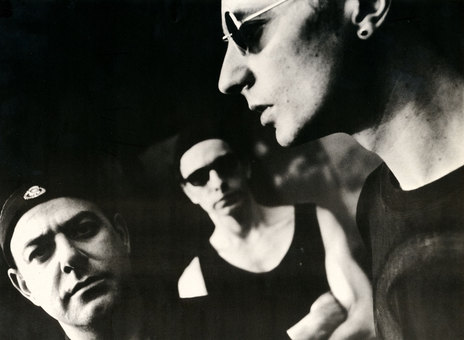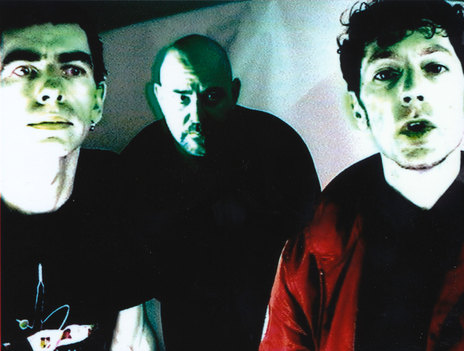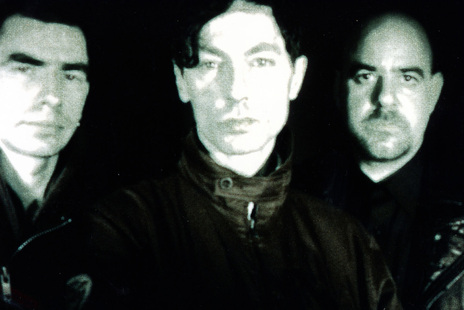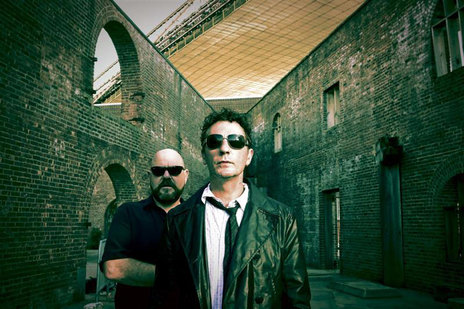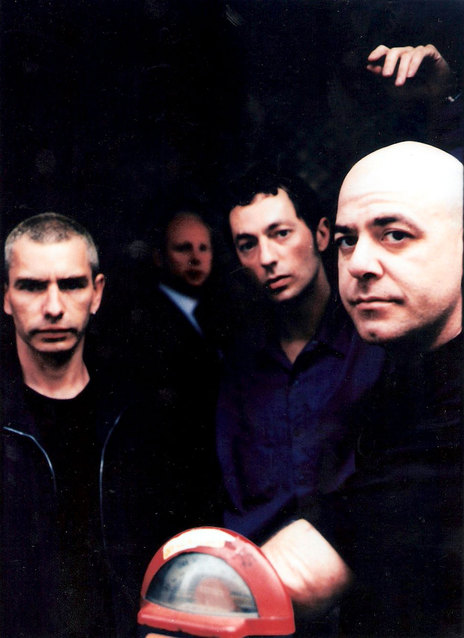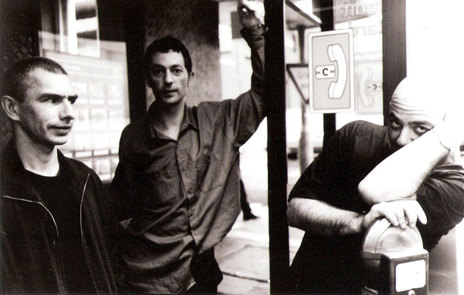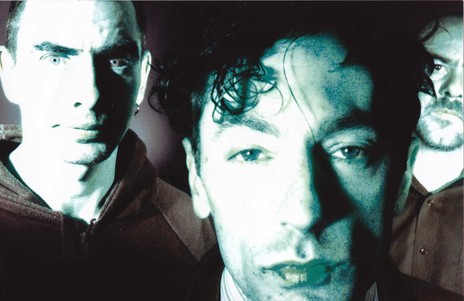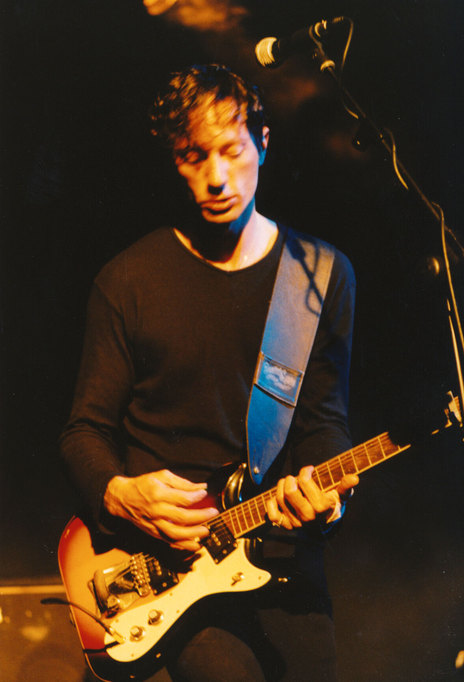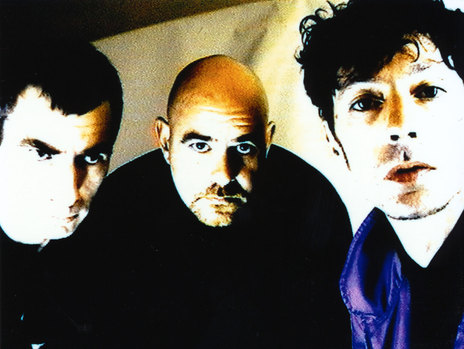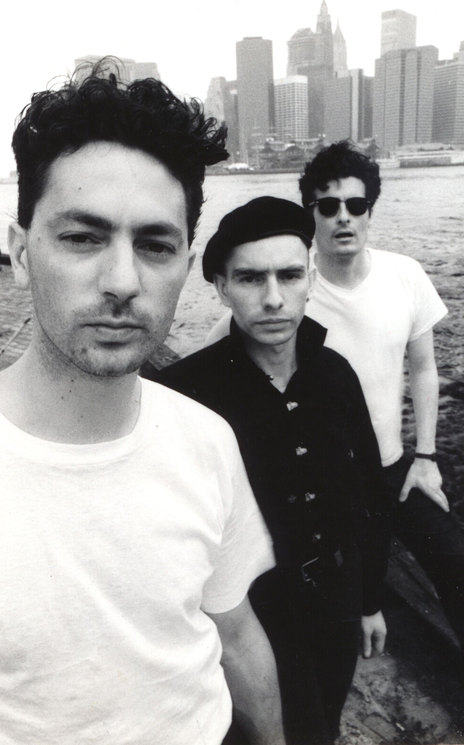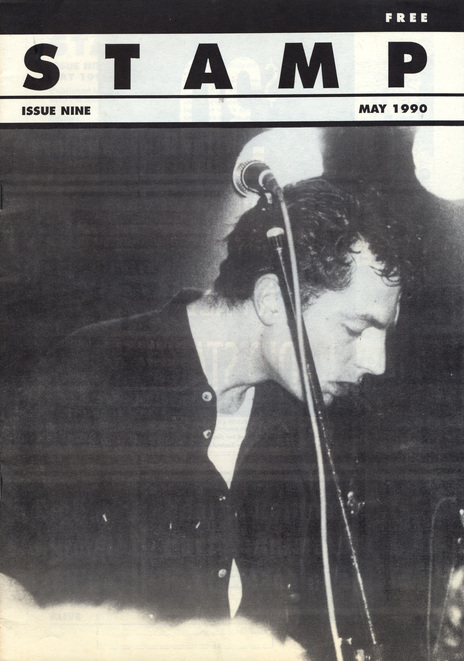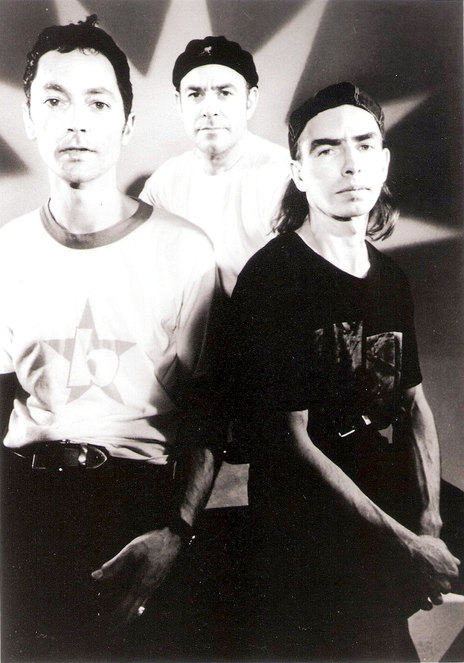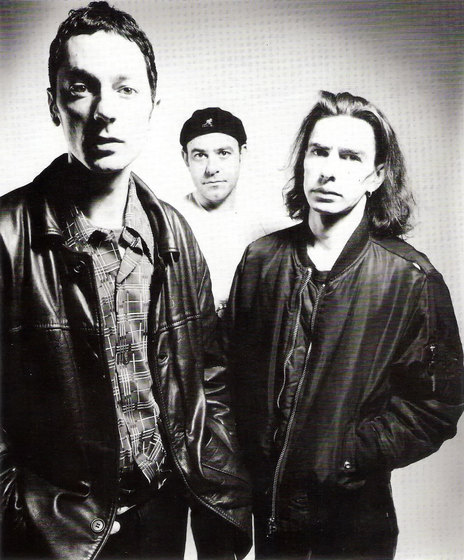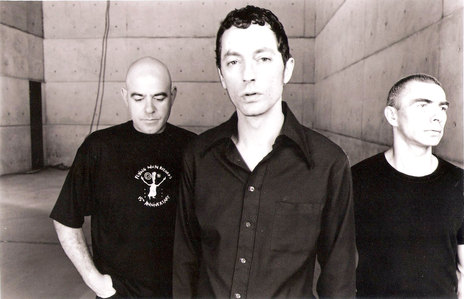Bailterspace have released nine albums and numerous EPs and singles. They continue the exploration of sound textures and thematic concerns that The Gordons first mined in the early 80s, and within their body of recorded work from the late 80s onwards, they have created some of the most compelling and original music of the late post-punk era.
They have created some of the most compelling and original music of the late post-punk era.
The very first incarnation of the group, Nelsh Bailter Space, began in Christchurch in mid-1986 when Alister Parker and Hamish Kilgour began jamming for fun. They had met serendipitously at the advertising agency that Kilgour worked at when Parker dropped by looking for photographic work. As time passed they added Glenda Bills on keyboard to augment their sound and in January 1987 they made their live debut in support of The Chills at the Carlton in central Christchurch.
More shows followed and by the winter of that year Ross Humphries, ex-The Pin Group, had joined to play bass. Bills remembers the period as one of intense creativity and by December 1987 Nelsh Bailter Space had toured the country and recorded their self titled EP in Auckland for Flying Nun, the first of many releases on the label.
The Nelsh Bailter Space EP is an uneven yet quirky and fresh sounding record that features the excellent ‘New Man’, with hints of New York funk accompanied by Parker’s circuitous guitar, as well as a sharp revival of The Clean, with a cover version of their lost 1979 classic 'I’m In Love With These Times'. It’s a song that perfectly sound-tracked then, as it does now, the gutting of heritage buildings, and the erection of the new, ugly glass-fronted buildings that accompanied 1980s NZ’s property speculation bubble and its empty intellectual antecedent ‘Rogernomics’.
1988 brought many changes to the band and its music. Bills and Humphries left and the “Nelsh” monicker, “a soft word” – as Parker describes it, was dropped from the name. John Halvorsen, Parker’s colleague from The Gordons, was then asked to join the band. Halvorsen, at this time, was working as a graphic artist, playing guitar in the Skeptics as well as being a co-owner of Writhe Studios in Wellington. He agreed, and his addition brought a new cohesion and edge to the band. Bailterspace began to develop a more hypnotic, drone based rock flavour, which was investigated more fully during the sessions at Writhe in April 1988 for their debut album Tanker.
A three-night stand on K’ Road in Auckland the following month saw the band playing to an audience containing a new generation of youngsters who had never seen The Gordons or The Clean and those present were wowed with a three-piece band that at times sounded like a Sufi collective with a thumping 4/4 backbeat.
The international interest in independent NZ music at this juncture was taking leaps and bounds. In July 1988, the band travelled to the USA to play at the New Music Seminar in New York. The band’s performance impressed the NYC crowd; local tastemakers made notes about them. After playing a few more dates on the East Coast with The Bats, the band returned home on a high, but without drummer Hamish Kilgour, who had decided to stay in the USA.
The trio of the original Gordons were reunited, some seven years after Parker’s departure.
Brent McLachlan, ex-Gordons drummer, now a busy sound engineer/co-owner of Writhe and drummer for the Skeptics, was asked to join the fold, and the trio of the original Gordons were reunited, some seven years after Parker’s departure.
In July 1989 the trio set out on their first national tour and got back into their groove of drenching audiences in sound with large PAs. Soon after, they followed other Flying Nun acts like Straitjacket Fits and Headless Chickens to Australia and played in Melbourne, Sydney and Brisbane for the first time.
The band’s concerts in this period became progressively larger, more anticipated events. Their music had evolved into masterfully executed hypnotic grooves with large slabs of noisy piquant chords, exquisite key changes, and alternately cajoling and menacing vocals on top – a la ‘Skin’. The band’s experiments with guitar tunings had become a fundamental signature and component to their sound and developed alongside the introduction of samplers into their work. During this period some of the band’s best ever music was put to tape and released as the excellent Thermos album in 1990.
A packed concert at the Gluepot in Auckland in November 1990 saw the maturity of the band’s direction –with audience members stunned and transfixed. There was something palpable going on inside the music, aside from the sheer volume, that moved people and lifted their spirits. John Halvorsen remarks of that period, “What was typical of New Zealand audiences [was that] their jaws would drop, they’d have their eyes shut, and their mouths open and they’d kind of sway, almost hypnotically.” Shortly afterwards this would change when a few audience members took to stagediving, which had never happened before.
There was something palpable going on inside the music, aside from the sheer volume, that moved people and lifted their spirits.
The band undertook their first European tour between March and May 1991, taking in Germany, Austria, Switzerland and the UK. In London they played a packed out pub in Camden to ex-pat Kiwis and excited English punters eager to hear the sounds of Thermos. They returned home via a live show at the Knitting Factory in New York City and a recording session at Calliope Studios in NYC that produced the track ‘The Aim’ – clutching a five album recording deal from Chris Lombardi of Matador Records. Matador were keen to have Bailterspace, who they loved – not only for their music, but also for their mysterious and ambiguous record covers, which gave little away.
In October 1992 after a farewell tour of New Zealand, Bailterspace left the country to sign the deal with Matador, play again on the East Coast of the USA, and tour Europe again. Once in Europe they based themselves in Cologne, playing shows and waiting while immigration papers were finalised – then eventually moved to London in December 1992.
A John Peel session was recorded at Maida Vale, then a London label Clawfist released the 7-inch single ‘Shine’ b/w ‘Unseen’. The UK press went ballistic over the latter with two successive “Single of the week” awards in the Melody Maker. The review in Melody Maker noted, “ ‘Unseen’, the B-side, is even better. Against a calamitous backdrop of crumbling, decaying guitars collapsing like Civilisation As We Know it, the vocalist sleepwalks through an intonation that, from the bits that drift in and out, sounds like a reproachment indictment of a consumer society gobbling itself to death and quickening the pace of its own destruction. Cryptic, ominous, intriguing, Bailterspace hover nervously on the edge of implosion.”
In October 1993 Robot World was released to international critical acclaim and the band were getting accustomed to living and working in the USA. They toured the USA and Europe again in 1994, and shortly after a brief return home, released the Vortura album – an artistic tour de force. The album, powerful yet alluringly murky, contained moments of sonic genius with the frenetic feel and acid critique of ‘Projects’, the clanging yet romantic vibe of ‘X’, the dense rushing bad trip scenario of ‘Dark Blue’ and the inimitable and downright scary ‘Control’. The latter piece, predating the Edward Snowden disclosures about global surveillance by nearly 20 years, is a portent – wholly indicative of the depth within Vortura – and another reminder of how ahead of their time Bailterspace were in different ways.
Journalists in the USA were keen to find out more about this mysterious trio and their musical roar.
Journalists in the USA were keen to find out more about this mysterious trio and their musical roar that mirrored the noise, fumes, and confusion of an increasingly fast-paced and fragile post-industrial society. One feature in Alternative Press suggested that if Peter Buck of REM had heard Tanker that “the acceptable face of American rock music would have been changed forever.” In the magazine Raygun Parker discussed the immense contrast between New York and New Zealand but noted, “New Zealand has enough fucked-up industry and bad things going on of its own, and it can be very violent and racist. With the contrast between that and the beauty of the country, well, it’s really easy to use your imagination there. Since there’s not a wall of stuff in front of you all the time, everything comes at you in bits and pieces, and you’re more apt to fill it in yourself.”
The band changed creative tack on their 1995 album Wammo, leaving behind their previous modus operandi of multi-layering for a far simpler approach of setting up baffles and doing live takes in the studio. The sessions were engineered by veteran Rod Hui, whose credits included: Public Enemy, Aretha Franklin, Philip Glass, John Cale, George Benson, and the Brian Eno-curated No New York compilation. Rolling Stone raved about Wammo, calling it “another brilliant renewal” and comparing Bailterspace’s perseverance to sonic exploration with that of Sonic Youth – noting such dedication “surely signals deep seated honesty.”
The band continued to tour incessantly in the USA, Canada, Europe, Australia and New Zealand. Audience sizes would range from 20 in small towns to packed venues with many hundreds, and they left indelible artistic marks behind them. New York had taken Bailterspace as one of its own although McLachlan recalls New Orleans, voodoo capital of the USA as being another great place for the band to play. “They loved us there.”
Bailterspace were still one of Matador’s favourite bands and good press continued to flow alongside the release of promo videos, like the witty backwards played 16mm film of ‘Splat’. It seemed Bailterspace were on the precipice of something bigger.
But in the end, with multiple takeovers happening in the music industry and an increased focus on sales, things changed for Matador, especially after joining with Capitol Records. The band left Matador sometime in 1996 although shortly afterwards they were offered a deal by a small NYC independent label, Turnbuckle. Bailterspace then released the Capsul and Solar.3 albums, the latter also coming out on Wildside Records in New Zealand. Another career highlight emerged from this period with the shimmering and beautiful ‘Argonaut’ – also on the B-side of the 7-inch release of ‘Capsul’.
The terrorist destruction of the World Trade Centre in September 2001 left part of central NYC as a smoldering, toxic disaster site. The atmosphere and vibe for artists in the city changed immediately and a year later Halvorsen returned home to New Zealand while Parker and McLachlan remained in New York. Little was heard from the band until 2008 when they played a one-off show at the Bowery Ballroom with bassist Ian Ljungquist. Strobosphere, the band’s first album since 1999, but devoid of Halvorsen’s presence, was released in 2012. Trinine, another new album followed in 2013.
In early 2013 Halvorsen joined Parker and McLachlan when Bailterspace played the Laneway Festival and two other dates in Auckland and Wellington. The band had lost none of their mojo and the range of songs they played demonstrated the integrity and agelessness of their work. The inclusion of The Gordons’ ‘Machine Song’ in their set was unexpected, and joyous to behold. However, its themes of alienation and spiritual paucity were, spookily, evermore prescient 33 years later, in a world of economic austerity, civil liberties displacement, increased ecological degradation, and technological saturation.
